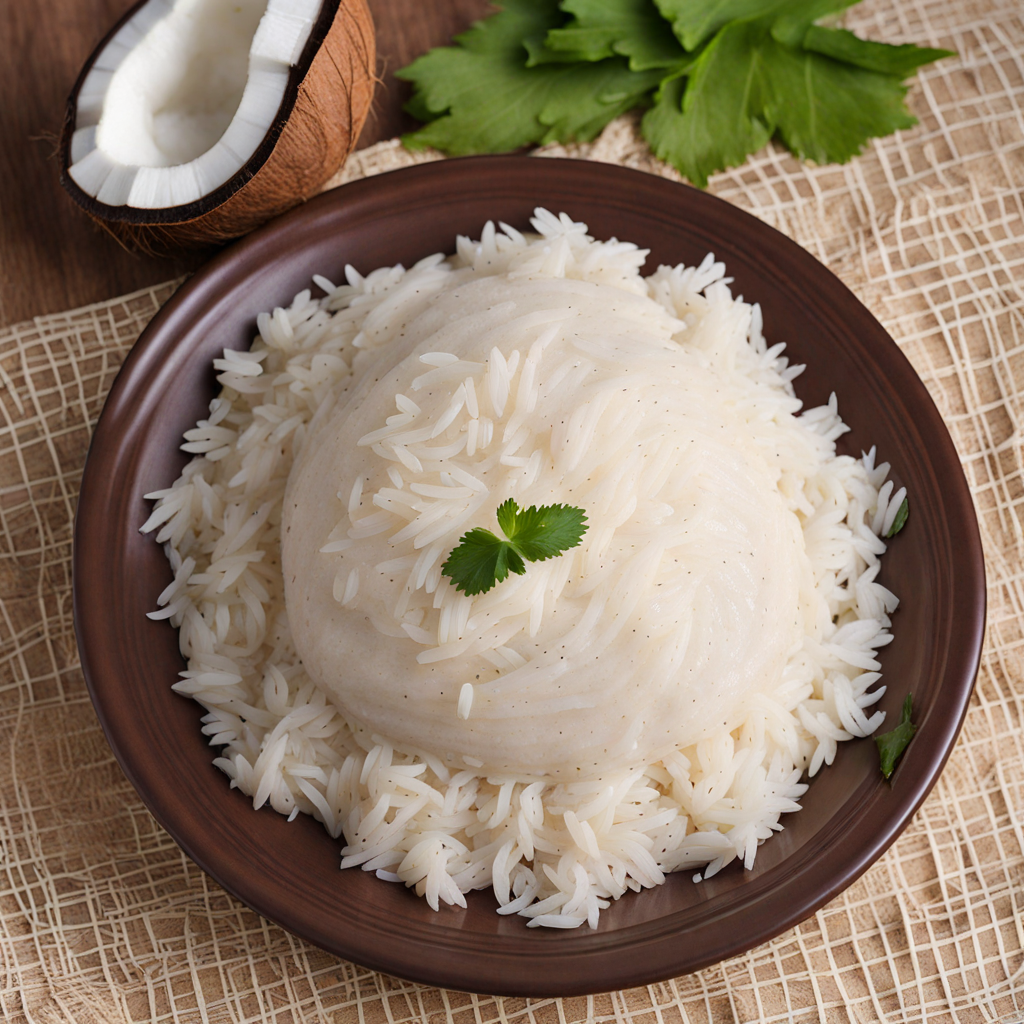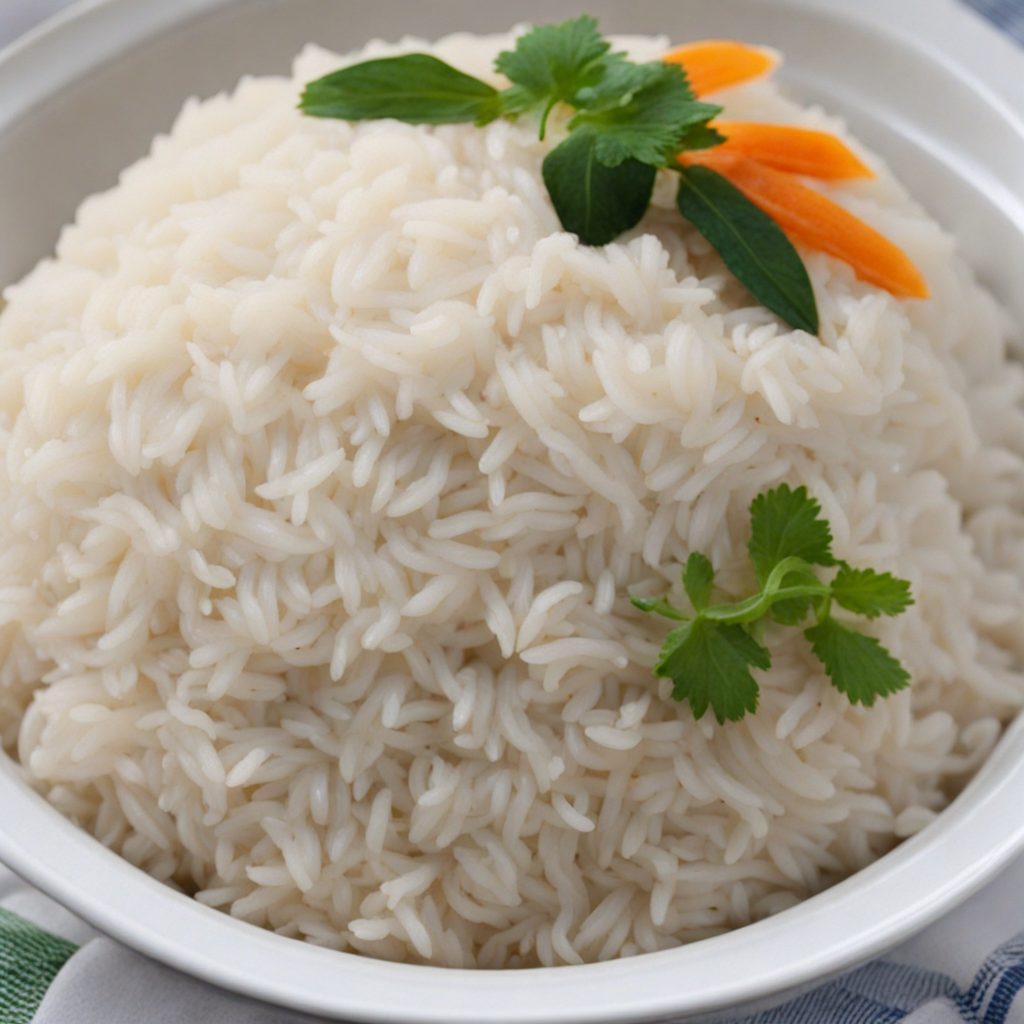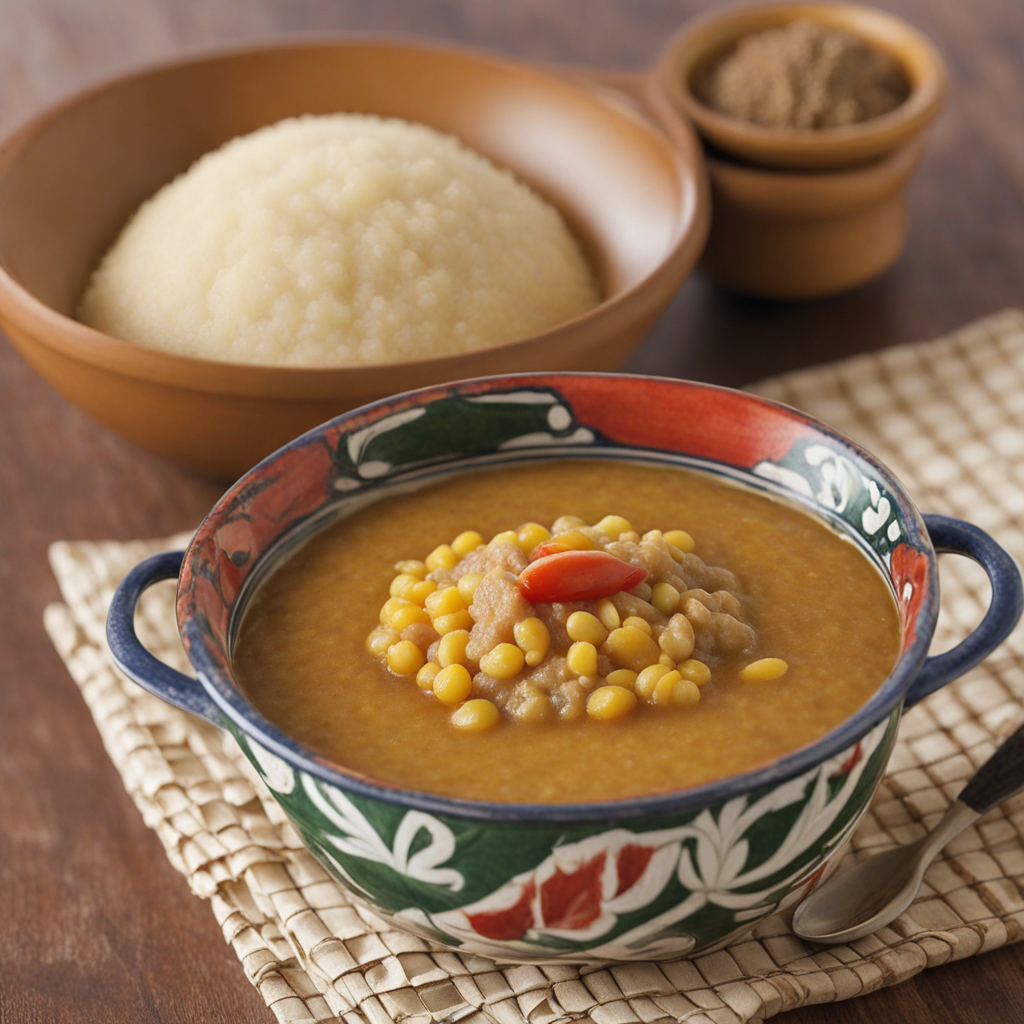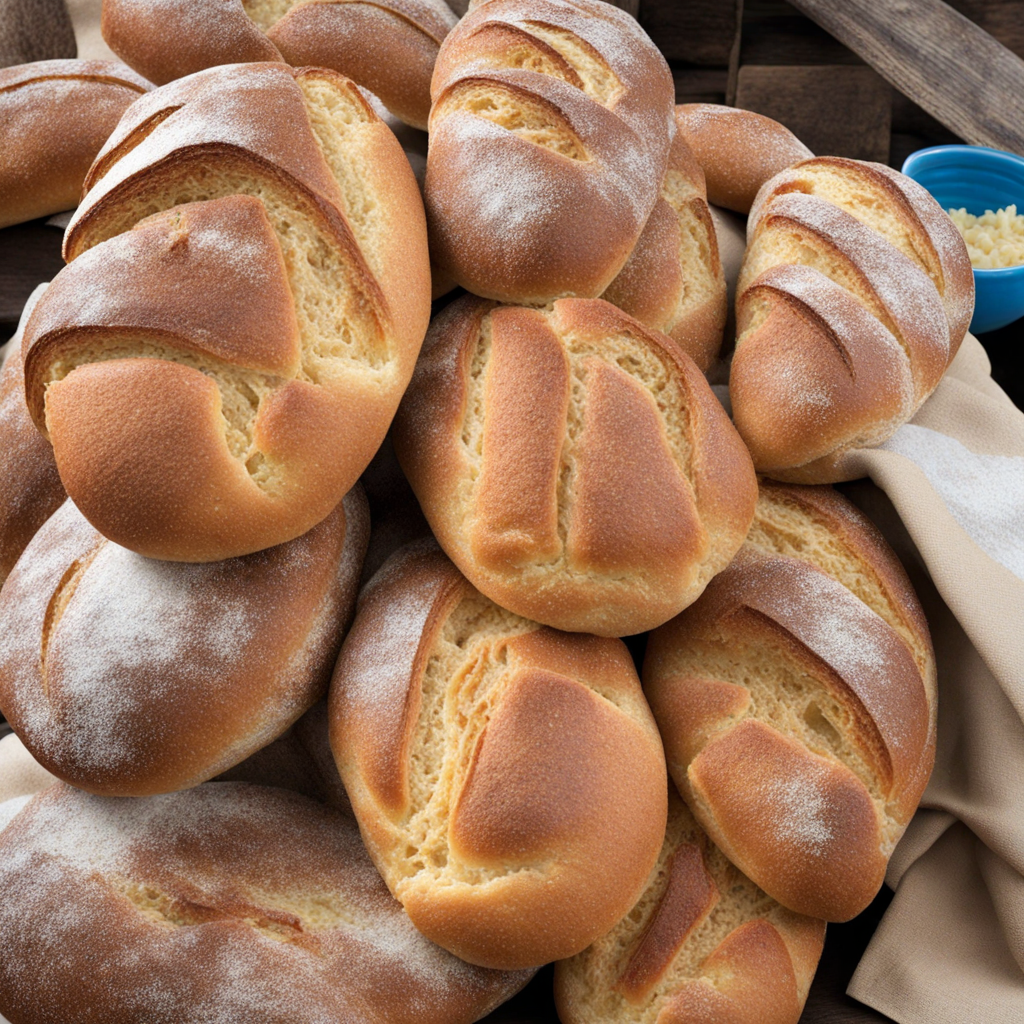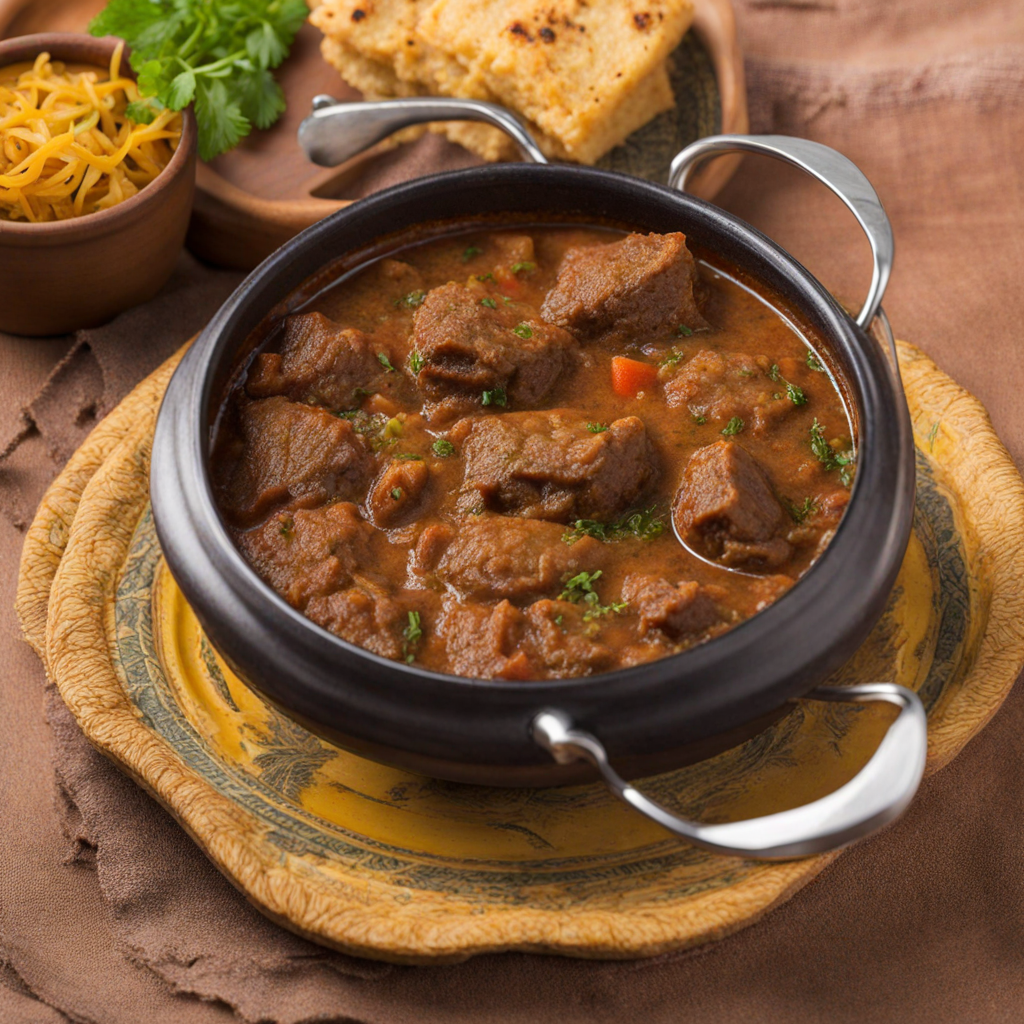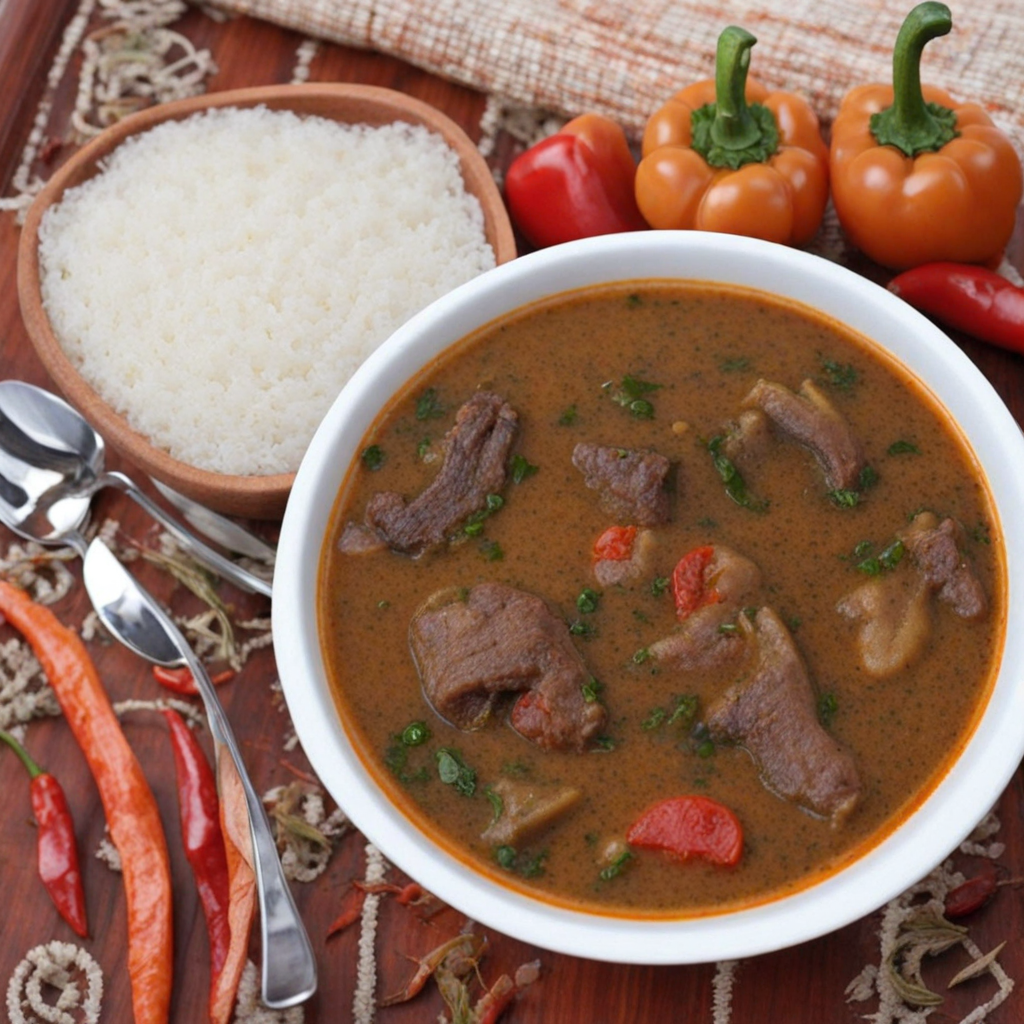Coconut Rice
Coconut Rice, a delightful dish hailing from Guinea, offers a unique fusion of flavors that is both comforting and exotic. This dish features fluffy rice cooked to perfection, infused with the rich, creamy essence of coconut milk. The rice absorbs the sweet and nutty notes of coconut, creating a harmonious balance that elevates each grain. The use of fresh ingredients, including aromatic spices and herbs, enhances the overall flavor profile, making every bite a delightful experience. Typically, Coconut Rice is often served alongside savory stews or grilled meats, allowing the creamy rice to complement the spices and richness of the main dishes. The addition of vegetables like peas or carrots can also be found, providing a pop of color and added texture. The creamy coconut base not only enriches the taste but also makes the rice wonderfully moist, setting it apart from other rice preparations. For those seeking to explore the culinary landscape of Guinea, Coconut Rice is a must-try dish. Its delightful combination of flavors and textures creates a memorable dining experience, perfect for sharing with friends and family. Whether you are looking to expand your palate or simply enjoy a comforting meal, this dish promises to transport you to the heart of West African cuisine with every mouthful.
How It Became This Dish
Riz à la Noix de Coco: A Culinary Journey Through Guinean History Origins of Riz à la Noix de Coco Riz à la Noix de Coco, or rice with coconut, is a beloved dish in Guinea, a country located on the West African coast. The origins of this dish are deeply intertwined with the cultural and agricultural practices of the region. Rice has long been a staple in West African cuisine, with Guinea being one of the top rice-producing countries on the continent. The cultivation of rice in Guinea can be traced back to ancient times, where it was grown in the fertile river valleys of the Niger and Gambia rivers. Coconuts, on the other hand, are not native to the African continent; they were introduced through trade and exploration. The coconut palm, believed to have originated in the Indo-Pacific region, made its way to Africa via seafaring traders and explorers. By the time it arrived in West Africa, it had already established itself as a crucial ingredient in various culinary traditions across the region. The combination of rice and coconut in Riz à la Noix de Coco reflects the fusion of local agricultural practices with influences from trade and migration. This synergy encapsulates the spirit of Guinea’s culinary landscape, where indigenous ingredients meet external influences, creating a rich tapestry of flavors and traditions. Cultural Significance Riz à la Noix de Coco holds a special place in Guinean culture, not only as a dish of sustenance but also as a symbol of community and celebration. Food in Guinea is often a focal point for social gatherings, and this dish is frequently served during important events such as weddings, religious ceremonies, and festivals. The preparation of Riz à la Noix de Coco is often a communal activity, where families and friends gather to cook, share stories, and strengthen bonds. The dish embodies the values of hospitality and generosity that are central to Guinean culture. When hosting guests, offering Riz à la Noix de Coco is a way to demonstrate respect and appreciation. The dish can be prepared in various ways, allowing families to infuse their unique traditions and flavors, thus personalizing the experience for their guests. Additionally, the use of coconut in the dish is significant. In many West African cultures, the coconut tree is often referred to as the "tree of life" due to its numerous uses – from the fruit to the leaves, every part of the tree serves a purpose. The coconut itself is rich in nutrients and provides essential fats, making it not only a delicious addition to the dish but also a vital source of energy for the community. Development Over Time As Guinea has undergone various social, political, and economic changes over the years, so too has Riz à la Noix de Coco evolved. The dish has adapted to the availability of ingredients, shifting dietary trends, and the influences of globalization. While the traditional preparation of Riz à la Noix de Coco still holds strong, contemporary interpretations have emerged. Traditionally, the dish is prepared using long-grain rice, which is cooked with freshly grated coconut, water, and a touch of salt. Some variations include the addition of spices, vegetables, or protein such as fish or chicken, reflecting the diverse culinary practices across different regions of Guinea. The use of local herbs and spices enhances the flavor profile, making each family’s version of Riz à la Noix de Coco unique. In recent years, with the increasing influence of globalization and culinary cross-pollination, Riz à la Noix de Coco has found its way into international cuisine. Chefs and food enthusiasts abroad have discovered the dish, leading to its incorporation into fusion menus and culinary festivals. This newfound recognition has sparked interest in West African cuisine as a whole, bringing attention to the rich culinary heritage of Guinea. Moreover, the rise of social media has played a pivotal role in the promotion of Riz à la Noix de Coco. Food bloggers and influencers from Guinea and the diaspora have showcased the dish, sharing recipes and stories that highlight its importance in their lives. This digital platform has created a sense of community among those who cherish Guinean cuisine, enabling them to celebrate their heritage while sharing it with a broader audience. Challenges and Resilience Despite its popularity, the journey of Riz à la Noix de Coco has not been without challenges. Guinea, like many West African nations, has faced economic hardships and political instability, which have impacted agricultural production and food security. Climate change poses a significant threat to rice cultivation, leading to concerns about the availability of this staple ingredient. However, the resilience of the Guinean people is evident in their unwavering commitment to preserving their culinary traditions. Community initiatives focused on sustainable agricultural practices have emerged, aiming to combat the effects of climate change and ensure the continued production of rice and coconuts. These efforts not only support local farmers but also reinforce the cultural significance of dishes like Riz à la Noix de Coco. Conclusion Riz à la Noix de Coco is more than just a dish; it is a reflection of Guinea’s history, culture, and resilience. Its origins, rooted in the agricultural practices of the region, tell a story of adaptation and fusion, while its cultural significance highlights the values of community and hospitality. As the dish continues to evolve amidst the challenges of the modern world, it remains a cherished symbol of Guinean heritage, bringing together people through shared meals, stories, and traditions. In an increasingly globalized world, Riz à la Noix de Coco stands as a testament to the power of food as a cultural connector, bridging gaps between generations and communities. Whether enjoyed at a family gathering in Guinea or featured on an international menu, Riz à la Noix de Coco continues to captivate palates and hearts, embodying the spirit of a rich and diverse culinary tradition.
You may like
Discover local flavors from Guinea


